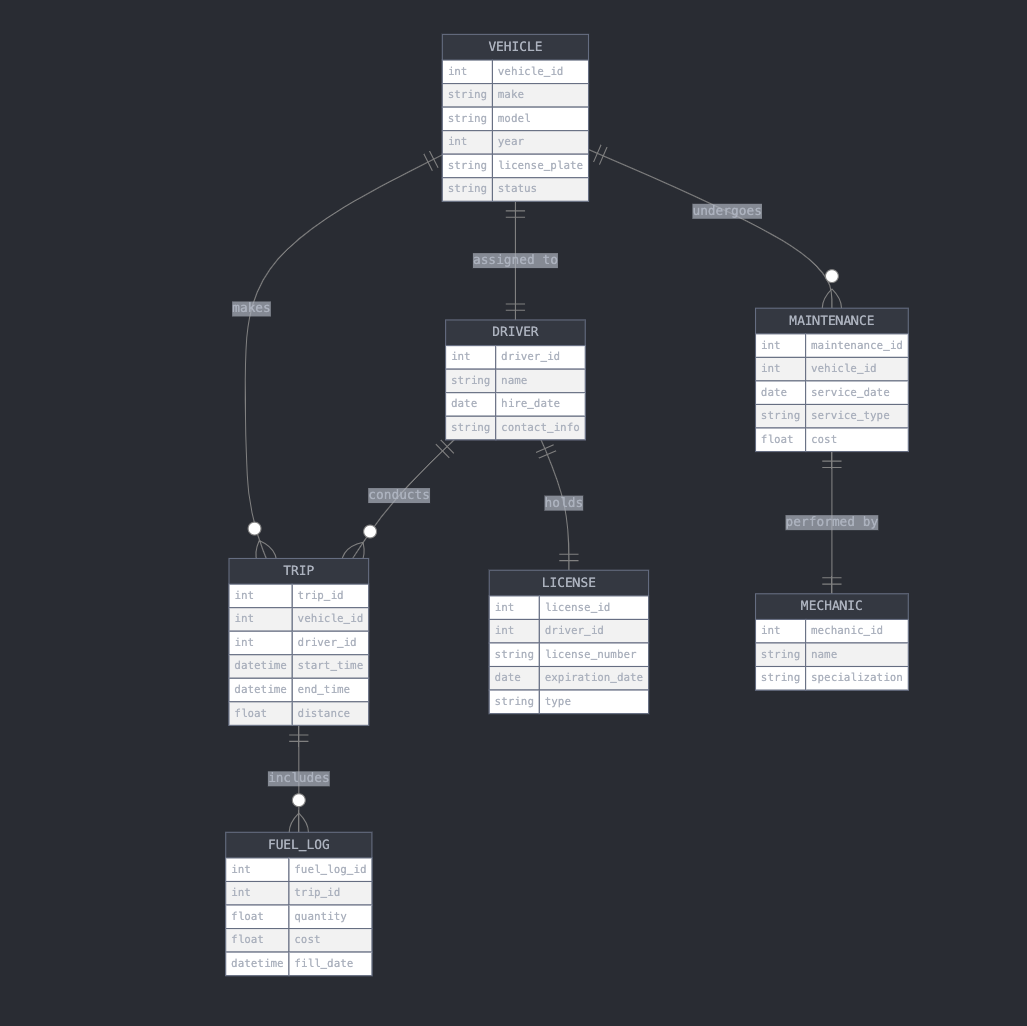Create a Fleet Database In 3 Steps
How to Rapidly Create a Fleet Database
Managing a fleet can often be extremely stressful, especially if spreadsheets, PDF or worse, paper forms are floating around the business. That’s why having an efficient and well-constructed fleet database to track your vehicles is important. Having a bad fleet management system or not at all can lead to operational inefficiencies, increased costs, and safety risks!
Off-the-shelf fleet systems might get the job done, but they are almost impossible to customize. That’s why building a custom fleet database is so attractive, as you can tailor it to the specific needs and requirements of your business. If you want to set up email alerts and notifications or include more advanced tracking features with a customized solution, you can do so.
This guide details how you can create your very own fleet database in just 3 steps.
Why Do You Need a Fleet Database?
A fleet database helps you manage the operations of your vehicle fleet. It can provide significant benefits whether you operate a small delivery service or a large logistics company. It’s an essential tool for fleet managers and administrators.
Some systems, such as our ready-to-use fleet management system, also offer logins for drivers, meaning maintenance issues, fuel logs and other essential communication completely take place online. This reduces the potential for human error, lost forms, or tedious handling of paperwork.
A fleet database acts as the single source of truth, storing all fleet-related information, including vehicle details, maintenance records, driver information, and operational data. This also makes it easier to access and analyze fleet data. For example, you can explore what your most popular route is, which vehicle make and model is more likely to break down, or what driver is the most reliable.
A fleet database should track maintenance schedules and alert you when vehicles are due for service. It should also help track various expenses, including repairs, maintenance, fuel, and insurance.
Five’s Ready-To-Use Fleet Database System
Our fully featured, scalable Fleet Management System lets you manage vehicles, drivers, maintenance and fuel logs intuitively and in one place. We designed our fleet management system specifically for teams like yours – giving you exactly what you need without overwhelming features you’ll never use.
How to Create a Fleet Management System?
What Are Your Options?
Currently, there are a few ways to set up your fleet database.
Spreadsheets can handle basic fleet management tasks, but come with significant limitations. Human errors in data entry can quickly turn into major issues. Without clear ownership or version control, changes made by different team members can easily be lost or duplicated, especially if the responsible person leaves the company.
As your reporting needs grow, spreadsheets can become cumbersome, slow, and difficult to navigate, leading to wasted time and resources.
Purchasing off-the-shelf software can be a quick way to deploy a fleet management system. However, these solutions often fail to meet all your specific data needs.
Many fleet managers find that these generic systems lack the specialized features necessary for their operations. Additionally, using generic software means relying on the vendor for updates and support, posing a risk if the vendor faces issues or goes out of business.
Generic software also cannot be customized, or doing so is very expensive. Even a small change will set you back several thousand dollars as you’re stepping out of the vendors’ “best practices”.
In summary, you can code a fleet database from scratch or purchase an off-the-shelf solution that may not fully adapt to your specific needs. Your third option is to use a database application builder like Five, which allows you to easily create a fleet database, giving you a fully customizable fleet management system at an affordable monthly subscription.
Why Creating a Fleet Database Is Now Easy
Five is an application builder that comes with powerful prebuilt applications, such as our fleet management system. Each application built with Five includes a customizable online database that can be tailored to your needs.
While setting up a fleet database with Five isn’t entirely effortless, it’s far simpler and quicker than spending countless hours learning various coding frameworks and languages. Here’s how Five makes the process easier:
1. You can set up a fully functional fleet database in one afternoon by starting with our ready-to-use fleet management system.
2. You can import existing data from Excel, Google Sheets, or CSV files directly into your fleet database, allowing you to get started quickly.
3. You can customize your database, workflows and processes to make the application truly yours. For example, Five lets you create custom charts and dashboards to visualize your fleet data, providing valuable insights and improving decision-making.
Step-by-Step Guide to Creating a Fleet Database
Step 1: Develop Your Entity-Relationship Diagram (ERD)
Start by listing all the data your fleet database needs to store. A helpful shortcut is to use AI tools like Chat-GPT to identify key components and relationships within your database. For example, you can ask, “What should be included in a fleet management database?”
Next, ask the AI to explain the relationships between different tables. The aim is to create an Entity-Relationship Diagram (ERD) that visually represents the structure of your database. If you find this task challenging, begin with a simplified version and gradually break it down into specific tables, fields, and relationships.

Note: This step can be done easily in Five.
Here’s a brief explanation of the entities and their relationships:
- VEHICLE: Central entity representing each vehicle in the fleet.
- DRIVER: Represents the drivers who operate the vehicles.
- MAINTENANCE: Tracks maintenance activities for each vehicle.
- TRIP: Records individual trips made by vehicles and drivers.
- LICENSE: Stores driver’s license information for each driver.
- MECHANIC: Represents mechanics who perform maintenance.
- FUEL_LOG: Tracks fuel consumption for each trip.
The relationships between these entities are as follows:
- A VEHICLE can undergo multiple MAINTENANCE sessions, but each MAINTENANCE session is for one vehicle.
- A VEHICLE can make multiple TRIPs, but each TRIP is associated with one vehicle.
- A VEHICLE is typically assigned to one DRIVER, and a DRIVER is assigned to one vehicle at a time.
- A DRIVER can conduct multiple TRIPs, but each TRIP is conducted by one driver.
- A DRIVER holds one LICENSE, and each LICENSE belongs to one driver.
- Each MAINTENANCE session is performed by one MECHANIC, but a MECHANIC can perform multiple maintenance sessions.
- A TRIP can include multiple FUEL_LOG entries, but each FUEL_LOG entry is associated with one trip.
This diagram provides a foundation for a fleet management database. Depending on specific requirements, you might want to add more entities or attributes, or modify the relationships.
Step 2: Construct Your Tables
Simply create fields, assign data types (e.g., string, float, integer, or binary), and define relationships with a few clicks.
One significant advantage of using Five is its automatic creation of Primary Keys and Foreign Keys. These keys uniquely identify records and establish relationships between tables, simplifying the database structure and ensuring data integrity.
Step 3: Launching Your Fleet Database Online
Once your database structure is complete, you can start populating it with data.
Using Five, you can easily upload CSV files directly into your SQL database. Just match the columns in your CSV to the fields in your database and import the data into the appropriate tables.
Alternatively, you can build a simple web-based graphical user interface (GUI) with Five. This interface can include forms for adding or editing records, charts for data visualization, and the ability to generate PDF reports, such as quotations or invoices, utilizing data from your relational database.
Last, to deploy your application, sign up for one of our paid plans, starting at $29.99 per month per application.


